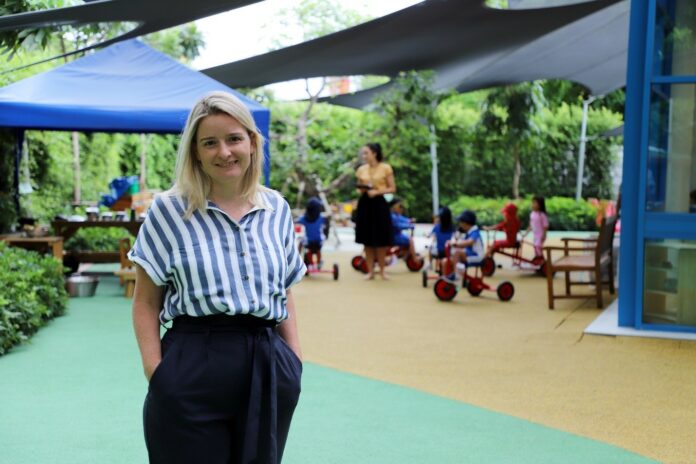
Cath Okill, Head of Early Years at Shrewsbury City Campus explains how seemingly unusual behaviours in our children can give us an important insight into their learning and development.
Have you ever noticed that your child likes to line up all their trucks in a row, and then becomes distraught when someone moves them? Or that your child is far more interested in the box that a present came in, rather than the gift itself?
These kinds of behaviours point to what is known in child development as ‘schemas’. Schemas are a way of organising knowledge. Evidence of schemas is particularly apparent in a child’s early years.

Young children will often display repetitive types of behaviour, such as (but certainly not limited to) hiding their toys, organising food on their plate by colour or simply rolling around on the floor. All these habits can point to particular types of schemas. These kinds of repetitive actions allow your child to find meaning in what they are doing, and to form new pathways in their young brains.
There are 8 widely acknowledged forms of schematic behaviour:
- Enclosing: Children are fascinated by spaces, boundaries and order.
- Positioning: Children like to arrange objects in rows or patterns
- Transforming: Children like to explore cause and effect
- Connection: Children will investigate how things join together or come apart
- Rotation: Children love to play with things that rotate
- Enveloping: Children are interested in space and capacity
- Transporting: Children will focus on moving themselves and other objects from place to place
- Trajectory: Children will be interested in how things move and respond
One of the boys in my class has a trajectory schema. He is fascinated by the flow of the fountains in our splash pool. He loves the climbing tree in our Early Years garden. It is my job to respect and extend his schema, by allowing him to explore and investigate in his own way. During the school day, I will bring the learning to him. For example, I may want to do some maths with him while he is climbing. Rather than asking him to come down into the classroom, I’ll simply climb up the tree and teach maths with him and his friends in the branches.

Perhaps your child is a transporter, an enveloper or a positioner. Children need to know what happens when they pick up and move a big handful of mud. Or when they fill up a glass of water and it overflows. Or when they want to eat their food in a certain order. We must allow our children to make these discoveries by themselves, to allow them to develop their confidence, their own problem-solving skills, and their understanding of the world.
Understanding schemas is a vital part of our early years teaching at Shrewsbury. The research gives our teachers a framework to celebrate the uniqueness of each of the children in our classes. It is also important for parents to be aware of the research surrounding schemas, to help their child develop in the very best way.
Shrewsbury International School Bangkok City Campus is currently accepting applications for children aged 3-11 years. Places are limited. To book your school tour, please visit: https://bit.ly/33bXCOX












































